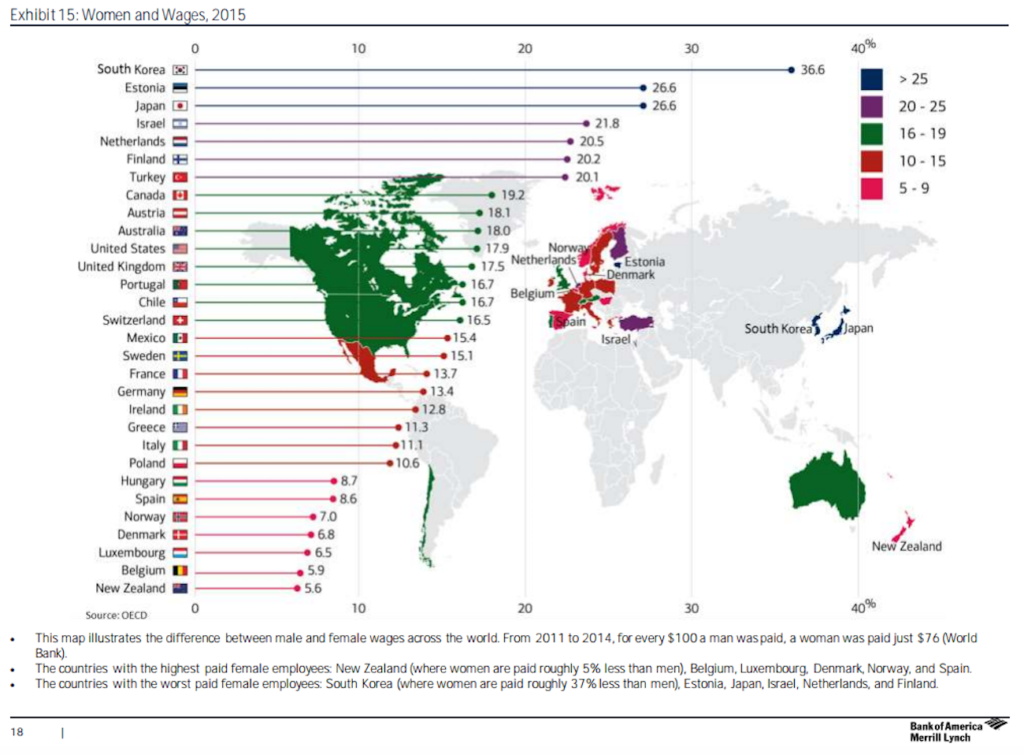Where women make more than men – #NOWHERE
Edited post: Added links to articles on the subject. See at the end of this post.
Gender diversity and equal rights between men and women, have numerous different aspects. One of them is “gender pay gap”, which is the average difference between a man’s and a woman’s average salary.
Even when you adjust for known factors, such as parental leave differences etc, women all over the world make less than men. This is a fact established by more than 260 current scientific studies. Data consolidated by World Economic Forum evaluating the gender pay gap in 145 countries show that in the US, as an example, women make on average approximately 80% of what men make.
The below illustration shows the gender gap in earnings, between OECD countries. For example, in Sweden there’s a 13 percent difference between the salaries of men and women.

I added the #NOWHERE-side of the chart.
The original only had the left side, showing countries where men make more than women. This creates a problem in ongoing debates where some still argue that the differences in pay can be justly explained or that they are not significant. The problem is that we’re adjusting our expectations incorrectly. I want equal pay for equal work and zero unexplained differences in pay, but in a discussion where inequality is debated, the #NOWHERE tag speaks volume.
Business Insider recently published an article stating: “There’s no country in the world where women earn more than men.”, citing Bank of America Merrill Lynch’s latest “Transforming World Atlas” report. “It notes that between 2011 and 2014, a woman earned $76 for every $100 that a man was paid, according to the World Bank. Even in the country with the smallest pay gap — New Zealand — women still earned 5% less than men in 2015.”

In the workplace, gender diversity and gender equality relate to many more topics than the “gender pay gap” and “equal pay for equal work”. For example, other topics include women in leadership positions, equal opportunities for visibility, equal opportunity to careers and training, etc. However, many of those topics ultimately boil down to wages and as a KPI, it’s telling. Many organizations are now heading into another period of salary adjustments. I urge all, including my own, to grasp every such period as an opportunity to focus and act on – to eradicate unjust inequalities in the “gender pay gap”.
More reading:
- The Simple Truth about the Gender Pay Gap (Spring 2017) (The American Association of University Women)
- The Cost of Workplace Flexibility for High-Powered Professionals (Scholarly paper by Claudia Goldin and Lawrence F. Katz, American Academy of Political and Social Science)
